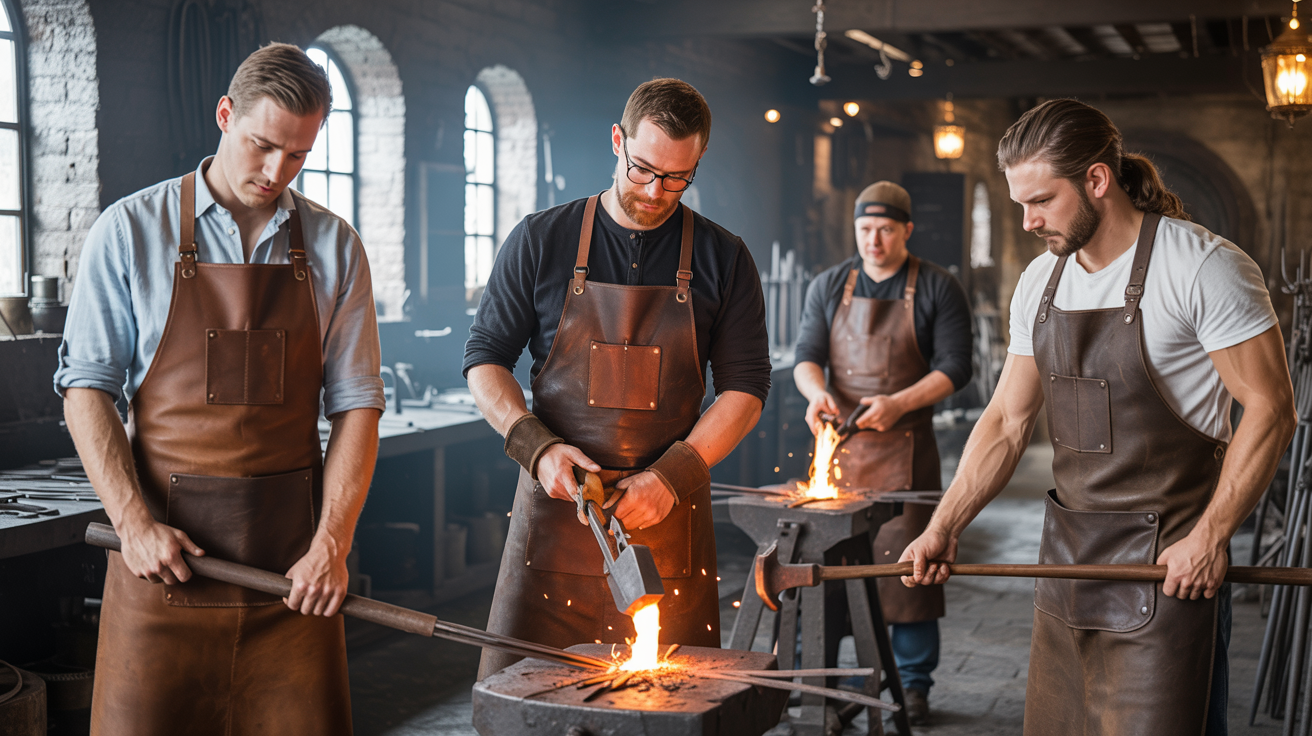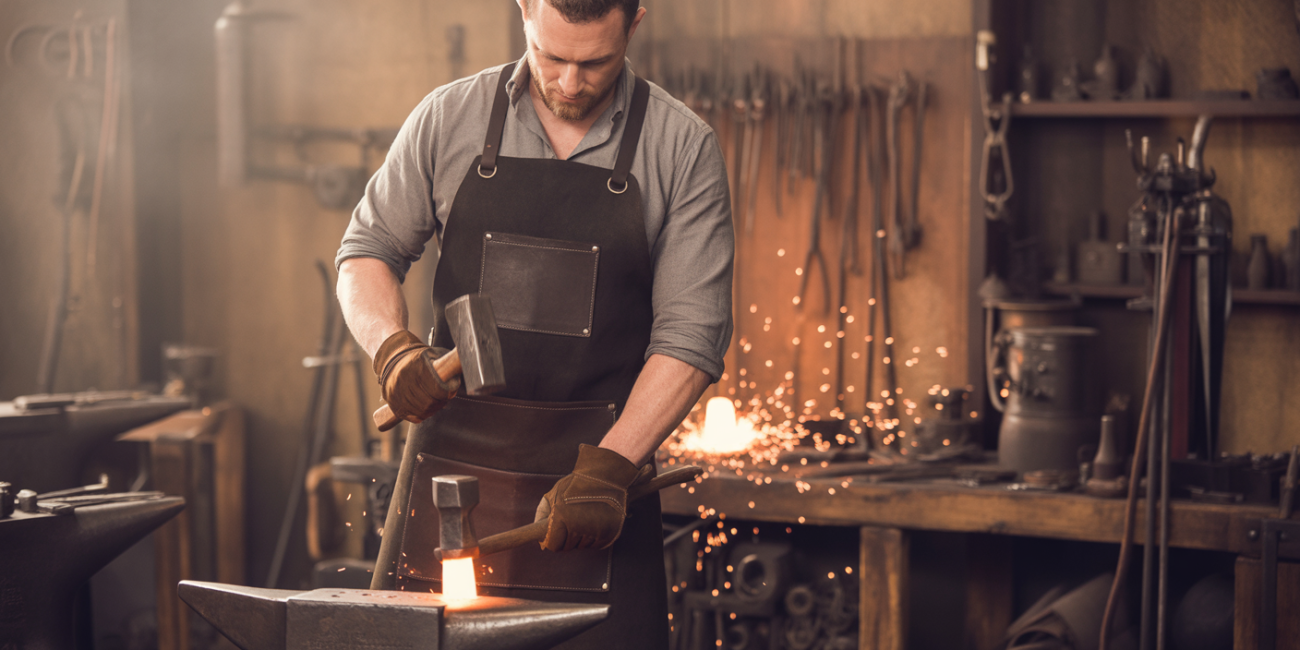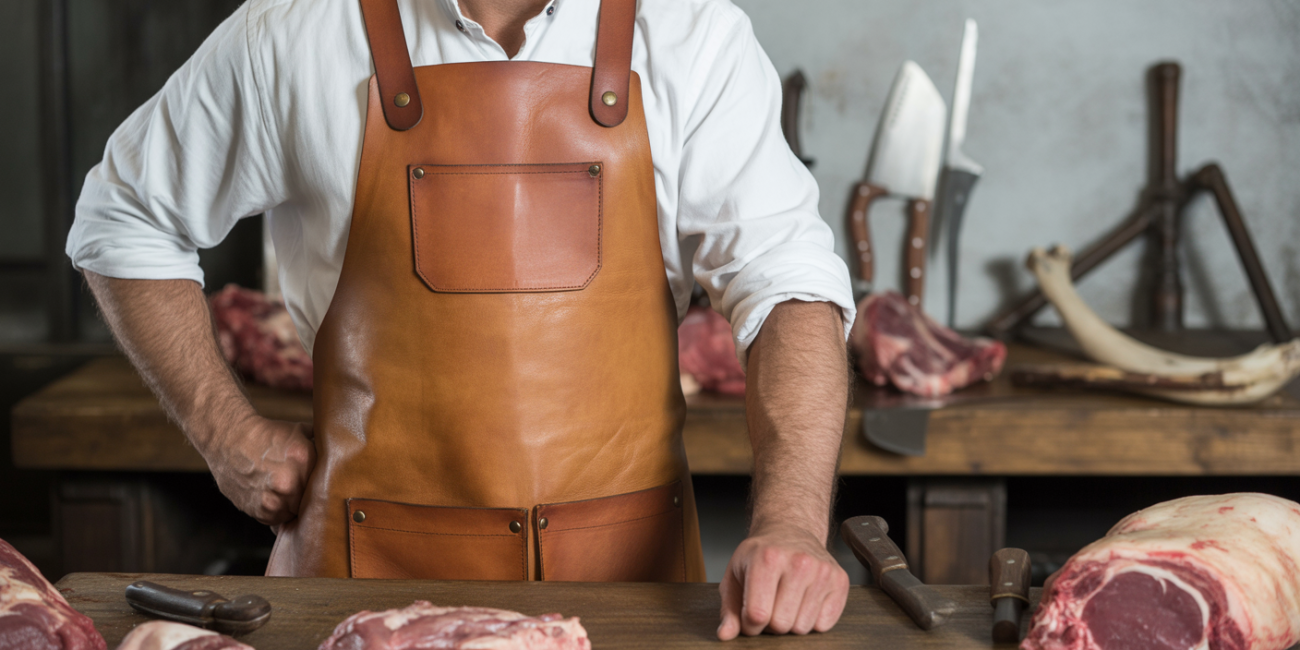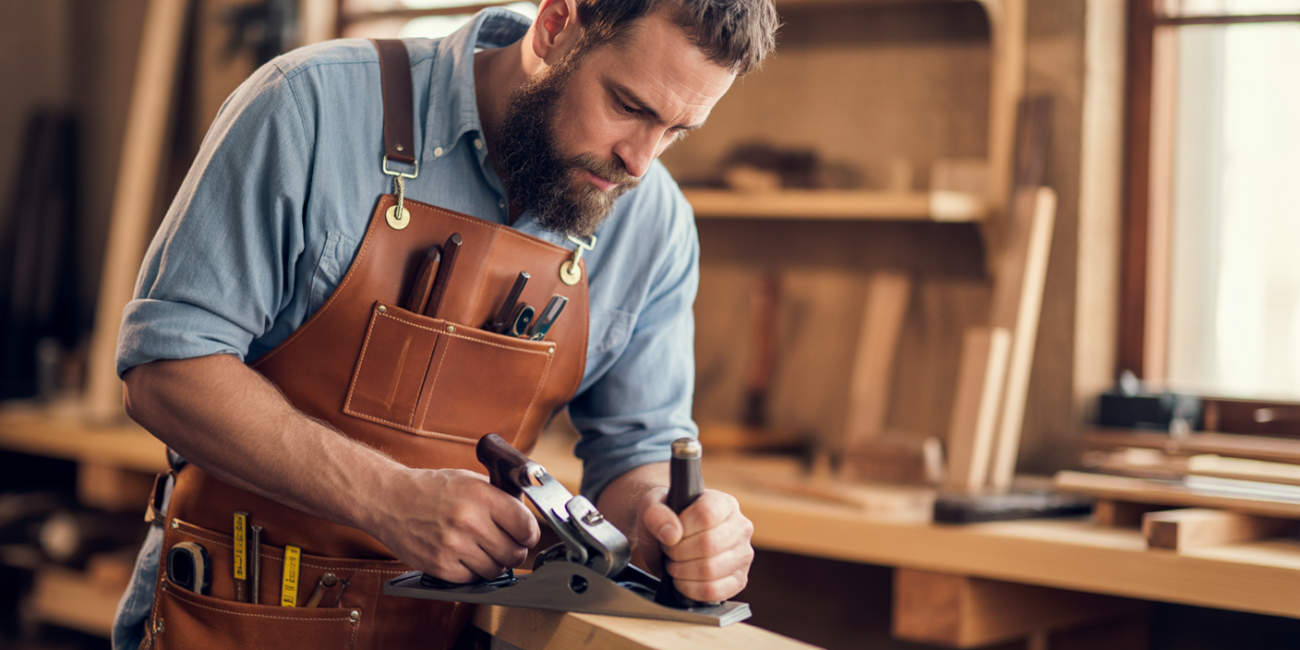Blog
Why Leather Aprons Are Essential for Professionals Like Blacksmiths, Butchers, and Carpenters?

In the world of skilled trades—where sparks fly, blades cut, and sawdust fills the air—safety, comfort, and durability are not just preferences; they are necessities. Among the tools and gear that professionals rely on daily, one item has stood the test of time: the leather apron. Whether you’re a blacksmith, butcher, carpenter, welder, or craftsman, a high-quality leather apron is more than just a piece of clothing—it’s a barrier, a utility layer, and often, a badge of your craft.
In this blog, we’ll explore why leather aprons are essential in hands-on professions, diving into their functional advantages, historical significance, and modern adaptations. We’ll also share some inspiring image prompts to visualize how they serve each trade.
1. Leather Aprons in Blacksmithing: Shielding from Sparks and Heat
Blacksmiths work in extreme environments. The process of forging metal demands high temperatures, heavy tools, and a continuous exposure to flying sparks and molten particles.
Why Leather?
Leather is naturally heat-resistant, tough, and non-flammable, making it the ideal barrier between hot metal and human skin. Unlike synthetic materials that can melt or catch fire, full-grain leather offers peace of mind when working with furnaces and anvils.
Beyond protection, leather aprons in blacksmithing often come with reinforced chest panels, cross-back straps for comfort, and deep utility pockets for holding tongs, hammers, or punches.

2. Leather Aprons in Butchery: Clean Cuts and Cleaner Workspaces
The butcher’s trade is equal parts art and precision. When working with sharp knives, animal carcasses, and meat preparation tools, sanitation and safety are paramount.
Leather’s Role:
Leather aprons offer a non-porous barrier, which means blood, fat, and other residues do not seep into the material as easily as they would with cotton or canvas. This helps maintain hygiene while also protecting from accidental knife slips. Many butchers opt for split-leg leather aprons to allow mobility while maintaining coverage.
Moreover, leather is easy to wipe clean, especially when coated or wax-finished, making it more practical for daily cleaning than fabric alternatives.

3. Leather Aprons in Carpentry: Functionality Meets Durability
Carpenters deal with sawdust, wood splinters, nails, chisels, and electric tools on a daily basis. This calls for gear that not only protects but also enhances productivity.
Why Choose Leather?
Leather aprons for carpenters are often designed with multiple pockets, hammer loops, and reinforced panels, allowing for tools to be carried at hand without reaching for a toolbox. The heavy-duty nature of leather also guards against sharp wood edges, accidental tool drops, and flying debris.
Additionally, leather wears beautifully over time—developing a patina that tells the story of the craftsperson, becoming not just a tool but a part of their identity.

4. Historical Roots of Leather Aprons: A Symbol of the Trades
Leather aprons have been used for centuries—dating back to medieval Europe—where craftsmen in guilds wore them not just for protection, but also as a symbol of pride and professional identity. Blacksmiths, cobblers, masons, and even early surgeons donned leather aprons to show their association with their trade.
In many cultures, the leather apron still holds ceremonial or symbolic meaning, often passed down through generations of craftsmen. It’s a blend of tradition and utility that speaks to the timeless relevance of this gear.
5. Modern Benefits and Why Professionals Still Prefer Leather
Today, despite the rise of synthetic and high-tech materials, leather remains a top choice for professionals in hands-on trades. Here’s why:
- Breathability: Unlike rubber or plastic, leather breathes, reducing sweat and overheating.
- Longevity: A well-made leather apron can last decades with proper care.
- Comfort: As it breaks in, it molds to the user’s body, becoming more comfortable over time.
- Aesthetic Appeal: Leather looks professional and stylish, often enhancing a business’s image, especially in artisan shops and open kitchens.
6. Choosing the Right Leather Apron for Your Profession
When shopping for a leather apron, consider the following features based on your work:
| Feature | Blacksmithing | Butchery | Carpentry |
|---|---|---|---|
| Heat resistance | ✅ Must-have | ❌ Not required | ⚠️ Helpful but optional |
| Split-leg design | ⚠️ Optional | ✅ Helpful for movement | ✅ Recommended |
| Tool pockets | ✅ Few large pockets | ⚠️ Minimal | ✅ Multiple required |
| Easy-clean finish | ⚠️ Optional | ✅ Crucial | ⚠️ Helpful |
| Thick hide (e.g., cowhide) | ✅ Recommended | ⚠️ Medium-thick | ✅ Ideal for protection |
Always opt for full-grain or top-grain leather, adjustable straps for fit, and reinforced stitching. Comfort and functionality go hand in hand.
Conclusion: Leather Aprons—A Legacy That Works
Whether you’re forging iron, breaking down meat, or shaping timber, a leather apron is more than protection—it’s a statement of your trade. It protects your body, enhances your efficiency, and stands as a testament to the craftsmanship you carry forward.
In an age where disposable fashion and gear dominate, leather aprons offer timeless durability, blending tradition with practicality. For any professional working with tools, fire, or their hands, investing in a quality leather apron isn’t just smart—it’s essential.


